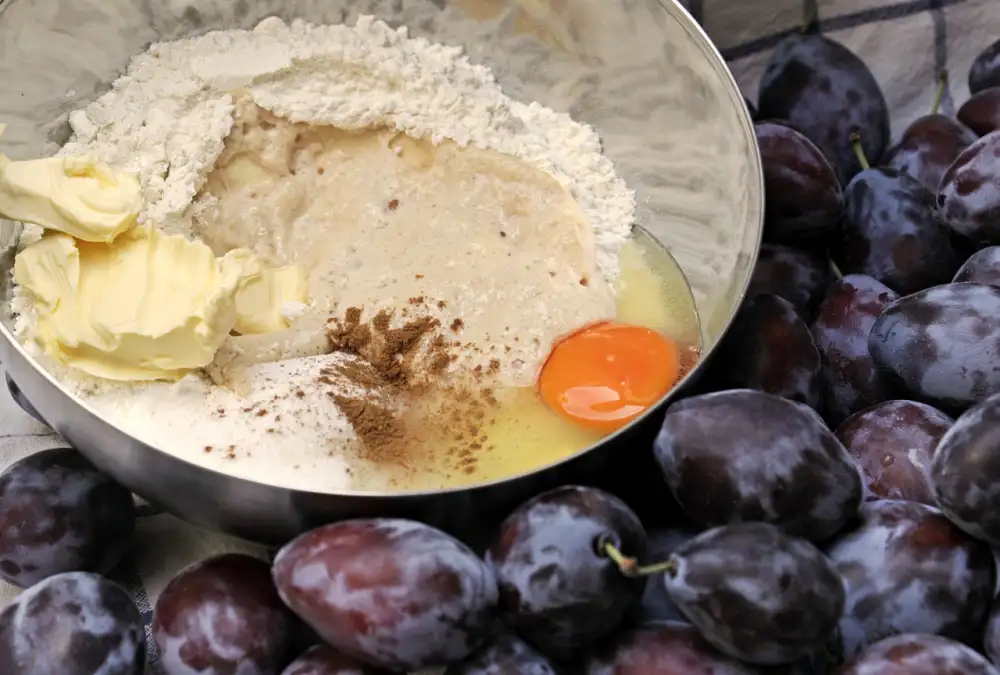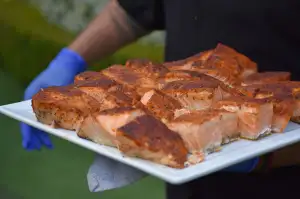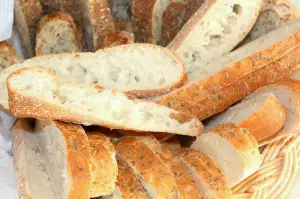Master the Art of Making Batter: Easy Recipes for Baking and Frying

Batter is a versatile mixture that forms the foundation of countless delicious recipes. Whether you're baking fluffy cakes or frying crispy treats, mastering the art of making batter is essential for any aspiring chef. With just a few simple ingredients and some basic techniques, you can create a world of culinary wonders right in your own kitchen. In this article, we will guide you through the process of making batter, providing step-by-step instructions and helpful tips along the way. Get ready to elevate your cooking skills and explore the endless possibilities that come with mastering the art of making batter.
Gather the necessary ingredients for the batter
Gathering the necessary ingredients is the first step in mastering the art of making batter. Depending on the type of batter you want to make, the ingredients may vary slightly. However, there are a few key ingredients that are commonly used in most batters.
First and foremost, you will need flour. All-purpose flour is a versatile option that works well for most batters. You can also use self-rising flour if you want your batter to have a lighter texture.
Next, you will need a leavening agent such as baking powder or baking soda. This helps the batter rise and gives it a light and fluffy texture.
To add moisture and richness to your batter, you will need some form of liquid. This could be milk, buttermilk, water, or even beer for certain types of batters.
Eggs are another important ingredient as they help bind the batter together and provide structure. Most recipes call for large eggs, but you can adjust the quantity based on your preference.
Lastly, don't forget to add flavorings and seasonings to enhance the taste of your batter. This could include salt, sugar, vanilla extract, herbs, spices, or even grated cheese depending on the recipe.
By gathering these essential ingredients beforehand, you'll be well-prepared to start making delicious batters for all your baking and frying needs.
Step-by-step instructions for making batter
1. Start by measuring out the required amount of flour into a mixing bowl.
2. Add in any dry ingredients such as baking powder, salt, or spices and whisk them together with the flour.
3. In a separate bowl, beat the eggs until they are well combined and slightly frothy.
4. Slowly pour the beaten eggs into the dry mixture while stirring continuously to avoid lumps.
5. Gradually add in liquid ingredients such as milk or water, pouring them in a little at a time while stirring constantly.
6. Continue to mix until all the ingredients are well incorporated and you have a smooth batter.
7. If the batter appears too thick, add more liquid; if it's too thin, add more flour gradually until desired consistency is achieved.
8. Let the batter rest for about 10-15 minutes before using to allow it to thicken slightly and develop flavor.
By following these simple steps, you'll be able to create a versatile batter that can be used for various culinary creations like pancakes, waffles, fritters, or even coating for fried foods.
Tips for achieving the perfect consistency
To achieve the perfect consistency for your batter, follow these helpful tips. Firstly, always measure your ingredients accurately to ensure the right balance. Too much liquid can result in a thin and runny batter, while too little can make it thick and lumpy. Secondly, gradually add the liquid to the dry ingredients while whisking continuously. This will prevent clumps from forming and ensure a smooth mixture. Additionally, if your batter is too thick, you can add more liquid slowly until you reach the desired consistency. On the other hand, if it's too thin, you can add small amounts of flour or other dry ingredients to thicken it up. Lastly, remember that different recipes may require different consistencies of batter. Pancake batter should be pourable but not too runny, while cake batters should be thicker and able to hold their shape when spooned onto a baking tray. By following these tips, you'll be able to master the art of achieving the perfect consistency for any type of batter you make.
Variations and flavor additions to enhance your batter
Variations and flavor additions can take your batter from ordinary to extraordinary. Experiment with different ingredients to create unique flavors and textures. For a savory twist, try adding herbs like rosemary or thyme, or spices like paprika or cumin. For a touch of sweetness, consider incorporating vanilla extract or cinnamon into your batter. You can also add grated cheese, chopped nuts, or diced vegetables for added texture and flavor. Don't be afraid to get creative and customize your batter to suit your taste preferences. The possibilities are endless!
Using the batter for baking or frying
Using the batter for baking or frying opens up a world of culinary possibilities. Whether you prefer the crispy texture of fried foods or the fluffy goodness of baked goods, your batter can be transformed into mouthwatering creations.
For baking, simply pour your batter into a greased baking dish or muffin tin and pop it into a preheated oven. The heat will work its magic, turning your batter into delectable treats like cakes, muffins, or even pancakes. Keep an eye on the baking time to ensure that your creations come out perfectly golden brown.
If frying is more your style, heat oil in a deep pan or fryer until it reaches the desired temperature. Dip your ingredients, such as vegetables, chicken, or fish, into the batter and carefully place them in the hot oil. Fry until they are crispy and golden on the outside and cooked through on the inside. Remember to drain any excess oil on paper towels before serving.
Experiment with different ingredients and flavors to create unique dishes. Add spices like paprika or cayenne pepper to give your batter a kick of heat. For a sweeter twist, try adding vanilla extract or cinnamon to enhance the flavor profile.
Remember to adjust cooking times based on the thickness of your batter and the size of your ingredients. Thicker batters may require longer cooking times while thinner batters may cook faster.
Whether you choose to bake or fry with your batter, always aim for perfection in terms of texture and taste. With practice and experimentation, you'll soon become a master at using batter to create culinary wonders that will impress family and friends alike.
Troubleshooting common issues with batter
While making batter may seem simple, there are a few common issues that can arise. Here are some troubleshooting tips to help you overcome them:
1. Too thick or lumpy: If your batter is too thick or lumpy, it may be due to not adding enough liquid or not mixing the ingredients properly. To fix this, gradually add more liquid while whisking until you achieve a smooth consistency.
2. Too thin or runny: On the other hand, if your batter is too thin or runny, it may be because you added too much liquid or didn't use enough flour. To thicken it up, gradually add more flour while stirring until you reach the desired thickness.
3. Not rising properly: If your baked goods aren't rising as they should, it could be due to expired baking powder or soda. Make sure to check the expiration date and replace if necessary. Additionally, overmixing the batter can cause it to lose its leavening power, so mix gently until just combined.
4. Uneven browning: If your fried items are browning unevenly, it could be because the oil temperature is not consistent. Invest in a good quality thermometer and maintain a steady temperature throughout frying for even browning.
5. Soggy texture: If your fried items turn out soggy instead of crispy, it may be because the oil temperature was too low when you started frying. Ensure that the oil is hot enough before adding the battered items to achieve a crispy texture.
By following these troubleshooting tips, you'll be able to overcome common issues that may arise while making batter and ensure delicious results every time!
In conclusion, mastering the art of making batter opens up a world of culinary possibilities. Whether you're baking fluffy pancakes or frying crispy onion rings, the key lies in achieving the perfect consistency. Remember to gather all the necessary ingredients and follow the step-by-step instructions carefully. Don't be afraid to experiment with variations and flavor additions to create unique and delicious batters. And if you encounter any issues along the way, refer to our troubleshooting tips. So go ahead, unleash your creativity and enjoy the wonders that batter can bring to your kitchen!
Published: 18. 12. 2023
Category: Recipes



